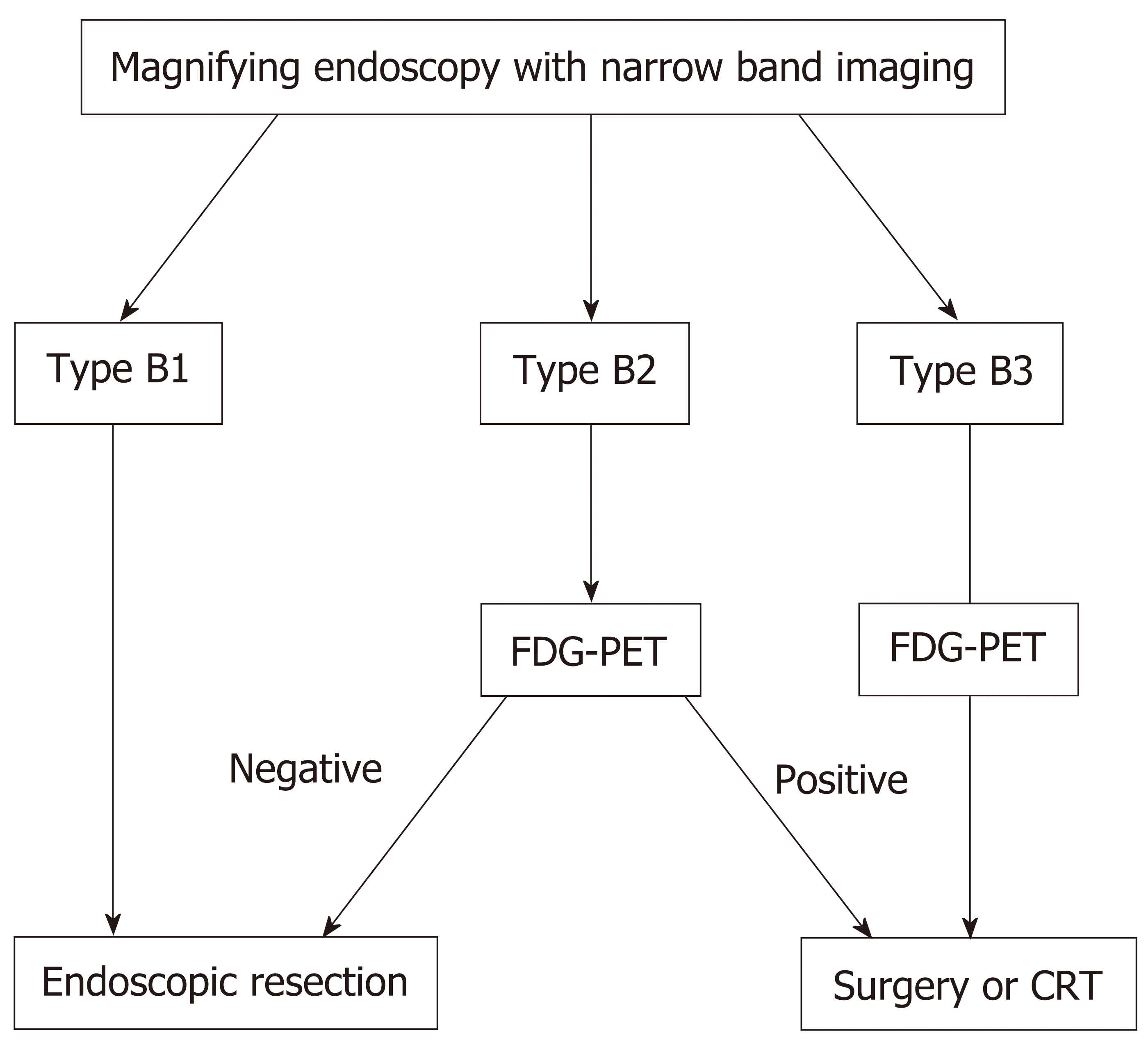Copyright
©The Author(s) 2019.
World J Gastroenterol. Dec 14, 2019; 25(46): 6767-6780
Published online Dec 14, 2019. doi: 10.3748/wjg.v25.i46.6767
Published online Dec 14, 2019. doi: 10.3748/wjg.v25.i46.6767
Figure 1 Overall survival of 82 patients with superficial esophageal squamous cell carcinoma stratified by fluorodeoxyglucose uptake and/or the findings of magnifying endoscopy with narrow band imaging.
A: Positive Fluorodeoxyglucose (FDG) uptake is an indicator of T1b SM2-3; B: Positive FDG uptake is an indicator for esophagectomy or definitive chemoradiotherapy (CRT), that is, T1a muscularis mucosae with lymphovascular invasion and T1b-SM; C: The combined finding of type B2 and B3 and positive FDG uptake defined as an indicator for esophagectomy or definitive CRT. PET: Positron emission tomography; MM: Muscularis mucosae.
Figure 2 Diagnostic algorithm for deciding a treatment strategy for superficial esophageal squamous cell carcinoma.
In the magnifying endoscopy with narrow band imaging, Type B1 findings are indicated for endoscopic treatment, and Type B3 is considered to be indicated for surgery or chemoradiotherapy (CRT). In Type B2, Fluorodeoxyglucose positron emission tomography (FDG-PET) negative is indicated for endoscopic treatment, and FDG-PET positive is indicated for surgical operation or CRT. ESCC: Esophageal squamous cell carcinoma; CRT: Chemoradiotherapy; FDG-PET: Fluorodeoxyglucose positron emission tomography.
- Citation: Toriyama K, Tajika M, Tanaka T, Ishihara M, Hirayama Y, Onishi S, Mizuno N, Kuwahara T, Okuno N, Matsumoto S, Sasaki E, Abe T, Yatabe Y, Hara K, Matsuo K, Tamaki T, Niwa Y. Clinical relevance of fluorodeoxyglucose positron emission tomography/computed tomography and magnifying endoscopy with narrow band imaging in decision-making regarding the treatment strategy for esophageal squamous cell carcinoma. World J Gastroenterol 2019; 25(46): 6767-6780
- URL: https://www.wjgnet.com/1007-9327/full/v25/i46/6767.htm
- DOI: https://dx.doi.org/10.3748/wjg.v25.i46.6767










